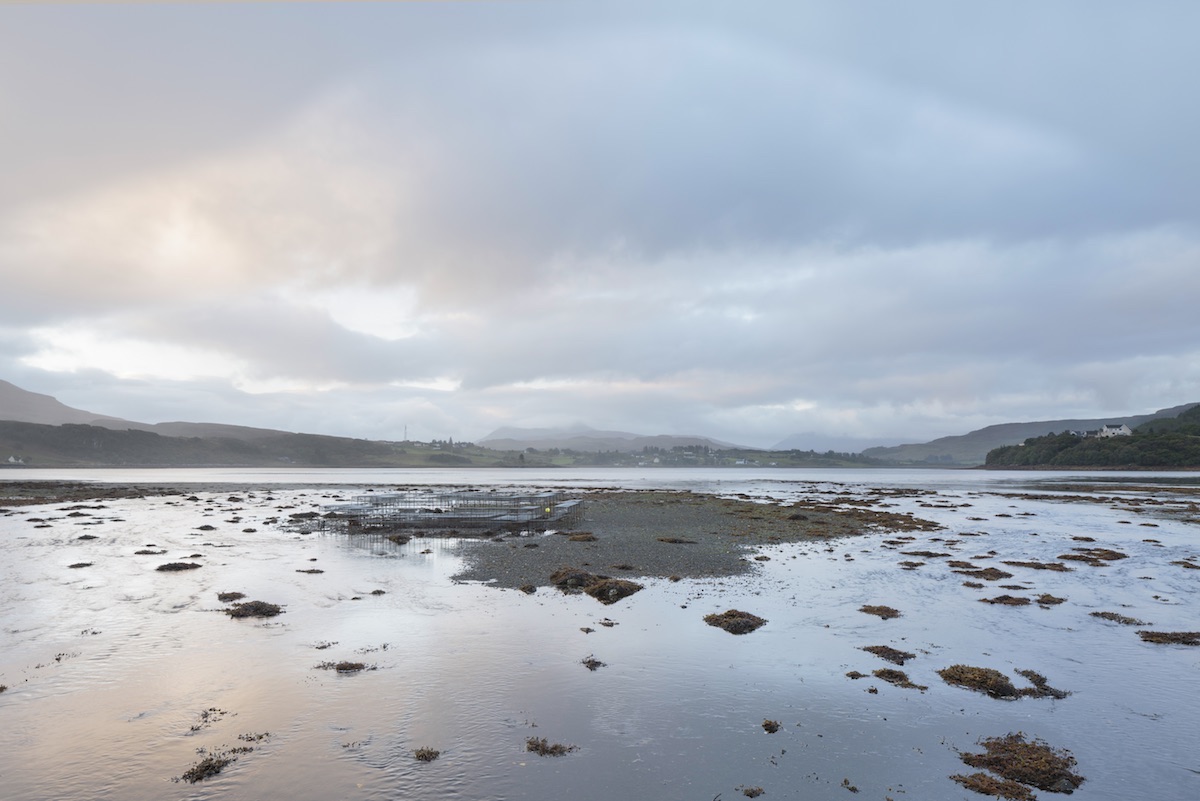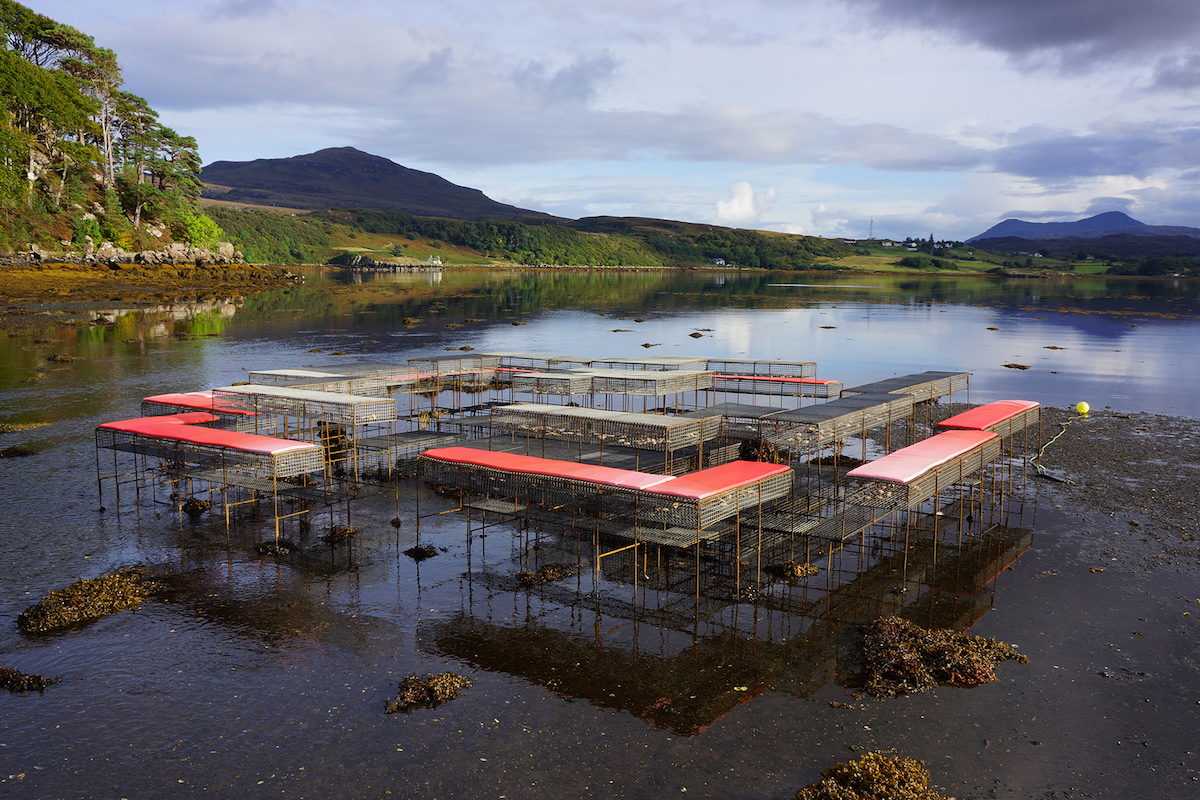The Harvard Graduate School of Design (GSD) has named Daniel Fernández Pascual, a Spanish-born, London-based architect, urban designer, educator, and researcher as the recipient of the 2020 Wheelwright Prize.
Now in its eighth year as an international open competition, the Wheelwright Prize, which first originated at Harvard GSD in 1935, is a research travel-based grant of $100,000 that funds globe-trotting proposals put forth by “extraordinary early-career architects.” Fernández Pascual’s winning proposal, Being Shellfish: The Architecture of Intertidal Cohabitation, examines the architectural possibilities of the world’s diverse intertidal zones—murky, muddy, and mysterious coastal areas that are covered by high tide and left fully exposed during low tide. For millennia, different cultures have turned to intertidal zones as a vital source of not only sustenance but for different building materials such as waste shellfish shells and seaweed. With Being Shellfish, Fernández Pascual will examine how these materials can be better used in contemporary architecture as a sustainable, circular alternative to ecologically destructive materials like concrete.
“Being Shellfish is an invitation to envision a paradigm shift in coastal ecology and architecture; an exploration to think like a mussel, see the world from the lens of an oyster, or explore the built environment like a cluster of dulse,” as Fernández Pascual explained his proposal to AN.

Considering the travel-intensive nature of the prize and the ongoing coronavirus pandemic, Fernández Pascual will approach his research in two separate phases. During the first phase, he’ll initiate contact with local sources and embark on whatever research can be performed remotely with each proposed case study. At a later point, Fernández Pascual will commence his travels to coastal communities that have rich waste shell and seaweed material cultures in Denmark, New Zealand, Chile, Zanzibar, China, Taiwan, Turkey, and Japan. Both remotely and on the ground, Fernández Pascual plans to “look at historical and contemporary innovations, such as seaweed thermal insulation and waterproof roofing, as well as the use of waste shells used as cement-less binding agents, cladding, and flooring systems in different parts of the world.”
“With current travel restrictions, I proposed to continue some of the ongoing conversations in the different sites remotely until the actual consequences of COVID-19 are more clear,” explained Fernández Pascual. “There needs to be a lot of work done beforehand, and this can also be a good moment to approach researchers, foragers, and growers from afar to start strategizing the fieldwork.”
“The conversation with elderly craftsmen working with a type of tabby concrete made without cement in Taiwan, and sedef mussel shell inlay artists in eastern Turkey are perhaps the places where I will start the journey when possible,” he added.
Fernández Pascual’s fascination with coastal ecosystems—particularly the threat to them—came early in life as a child growing up in Spain in the 1980s and 90s.

“I was always perplexed by the sheer amount of coastal developments, wherever we would go on family holidays,” he said. “Those were the years that inherited the built form of mass tourism promoted during the Franco dictatorship and which eventually led to a second wave of real estate speculation; a boom, which urbanized, and destroyed, invaluable parts of the Spanish littoral for the construction of second homes and tourist resorts. The fact that most structures were so close to the seafront was something I could never entirely grasp, and I guess, always stayed as a personal interest, to understand how we could inhabit the coast differently.”
Intertidal zones are a subject that Fernández Pascual has explored before through CLIMAVORE: On Tidal Zones. This long-term, site-specific project was initiated through Cooking Sections, a research-based London practice co-founded in 2013 with Alon Schwabe that, using video, installation, performance, and mapping, “explore the systems that organize the world through food.” Cooking Sections has exhibited at venues across the world including at the U.S. Pavilion at the 2014 Venice Architecture Biennale. Upcoming solo exhibitions will be held at Tate Britain and SALT Istanbul.
Being Shellfish will “extend and expand ongoing investigation on ecosocial coastal innovations in the intertidal zone” as initiated in CLIMAVORE.
“In some places like Taiwan, oyster shell ‘cement’ is an old practice to repurpose waste into the construction industry,” Fernández Pascual explained. “Although the practice is in decay, there are certainly ways in which it can be revisited. Similarly, seaweed has been used in roofing and thermal insulation across multiple geographies, from the Mediterranean to the North Sea. They can all reduce the amount of cement used in binding agents, as well as other construction materials from petrochemical origin. But a lot of work is yet to be done to meet current standards. What is important for our practice, Cooking Sections, is how we see these construction systems as closed loops that integrate food infrastructure with material production and architecture.”

Stateside, Cooking Sections is currently at work on a project in which oysters are being used as a tool to better understand “the complexity of these coastal ecosystems,” said Fernández Pascual. “There is still a lot to learn, but what is important is also to understand the interconnection with larger political, environmental, or economic events, from oil spills to land subsidence or the extraction of fossil fuels in the Gulf of Mexico. That can give us clues to think of other materials that can help think of alternative scenarios.”
This year’s Wheelwright Prize received more than 170 applicants. New York-based architectural designer Bryony Roberts and Brazilian architect Gustavo Utrabo were named as finalists alongside Fernández Pascual for their respective proposals.
“The potential for an investigation to play out so globally, and to draw in sites that offer such specific contexts, is rare, while the relevance of this topic and the care with which Daniel has organized his research agenda make me confident that this work will have a profound and widespread impact,” said Sarah Whiting, dean and Josep Lluís Sert Professor of Architecture at Harvard GSD, in a statement. Whiting also served on the 2020 Wheelwright Prize jury.
Fernández Pascual holds a Master of Architecture from ETSA Madrid, a Master of Science in Urban Design from TU Berlin and Tongji University Shanghai, and a PhD from the Centre for Research Architecture, Goldsmiths, University of London.
